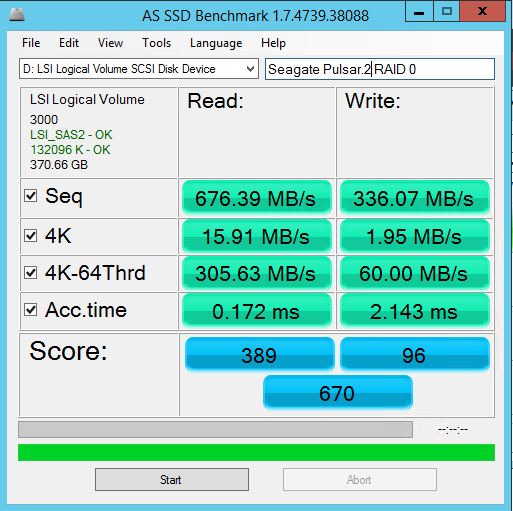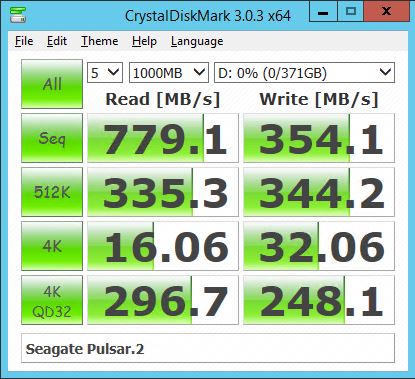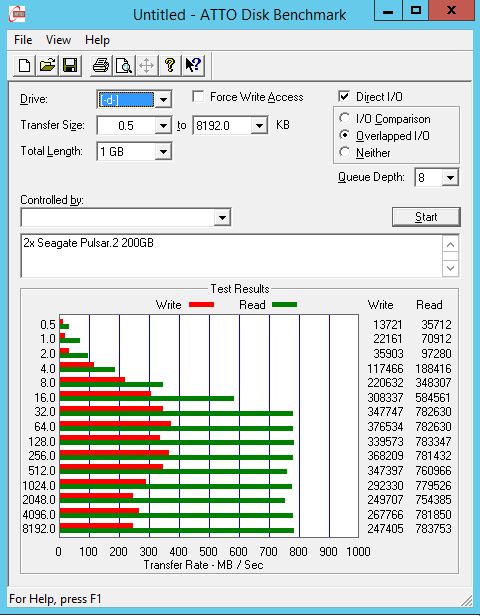Today we are taking a look at two Seagate Pulsar.2 200GB SAS SSDs in RAID 0. We previously did benchmarks of a single drive Seagate Pulsar.2 setup and today we are investigating RAID 0 performance with two drives. We already saw in our SanDisk Lightning 206s RAID 0 benchmarks that there were some results that indicated performance tuned for RAID arrays. That would seemingly make sense as these SAS SSDs are rarely deployed in single drive configurations. As a quick recap, the drives we are testing today are the Pulsar.2 SAS SSDs with MLC NAND. The XT variant was the SLC version. We set a price cap of $0.60/GB for our test samples on ebay so the drives we have here are well below that. For example, the Seagate Pulsar.2’s we purchased were under $0.55/GB.
We are continually growing this data set but here are the benchmark runs thus far:
Single SAS SSD Benchmarks
- Pliant/ SanDisk Lightning 206s 200GB SLC SAS SSD benchmarks
- Seagate Pulsar.2 200GB MLC SAS SSD benchmarks
- Pliant/ SanDisk Lightning 206s 200GB SLC SAS SSD benchmarks
- Smart Storage System/ SanDisk Optimus 400GB MLC SAS SSD benchmarks
2 Drive RAID 0 Benchmarks
Our goal is to continue posting one more per week in-between other articles. More in-depth coverage will happen soon also.
Test Configuration
Since we are going to assume the use of already released hardware, we are using a legacy system for testing across the test suite:
- Motherboard: Gigabyte GA-7PESH3
- Processors: Dual Intel Xeon E5-2690 (V2)
- SAS Controller: (onboard LSI SAS2008 in IR mode)
- RAM: 64GB DDR3L-1600MHz ECC RDIMMs
- OS SSD: Kingston V300 240GB
We did not use our Intel Xeon E5-2600 V3 platforms because this series started prior to the embargo being lifted on that platform. The Gigabyte’s LSI controller found onboard is the same as can be found in countless platforms and cards such as the IBM ServeRAID M1015 and LSI 9211-8i. We decided to use this controller since it is an extremely popular first-generation 6gbps SAS II controller. For those looking to build value SAS SSD enabled arrays, the LSI SAS2008 is likely going to be the go-to controller. A major point here is that we are using a SAS controller. This means that one cannot compare results directly to consumer-driven setups where a SATA SSD is connected to an Intel PCH port. There is a latency penalty for going over the PCIe bus to a controller to SAS. It also is a reason NVMe is going to be a game changer in the enterprise storage space.
Controller wise, the LSI SAS 2008 controller has plenty of headroom for this configuration. We do have the drives working with a LSI SAS3008 controller on an Intel Grantley-EP platform and may use these for the more in-depth testing.
Seagate Pulsar.2 200GB MLC SAS SSD Quick Benchmarks
For our quick tests during this part of the series we will just provide the quick benchmarks with only a bit of commentary.
AS SSD Benchmark
AS SSD is a solid benchmark that does not write compressible data to drives. The result is perhaps one of the best workstation SSD benchmarks available today.

Overall the sequential read and write speeds did about how well we would have expected with the sequential read speeds slightly more than doubling with RAID 0. The big surprise was that while the 4K write speeds remained constant at the very slow 1.95MB/s, the 4K-64Thrd figures were up more than double from 24.9MB/s on the single drive configuraiton.
CrystalDiskMark
CrystalDiskMark is another benchmark which gives non-compressible read/write numbers. This is in contrast to the ATTO Benchmark used by LSI/ Sandforce and its partners when they market a given solid state drive.

CrystalDiskMark saw a similar pattern in the highly threaded 4K results. On the same token, the performance on sequential reads and writes more than doubled. In our single drive testing the sequential CDM speeds were poor while these are respectable.
ATTO Benchmark
The value of the ATTO benchmark is really to show the best-case scenario. ATTO is known to write highly compressible data to drives, which inflates speeds of controllers that compress data like LSI/ SandForce does prior to writing on a given solid state drive.

On the ATTO benchmark we see solid read speeds but write speeds again taper off. The other item to notice is the peak between the 32 and 512 results which is similar to the peak we saw with the single drive. In comparison, consumer style SATA disks generally maintain a higher level of write performance even into the higher transfer sizes.
Conclusion
It does seem like we are again seeing a SAS SSD that performs better in a striped RAID array than we saw from a single disk. Further, in some cases we are seeing scaling that indicates better performance in RAID arrays. The LSI SAS2008 does not have write cache and we would consider 85% to 90% “good” RAID 0 scaling. When we see figures repeatable and over 100% scaling moving from one disk to two, there seems to be something else going on. More to come as we will soon get to test using a more extensive suite.





Onboard controller on Gigabyte. Seriously? LOL!